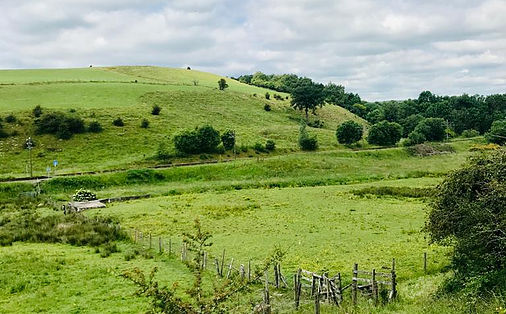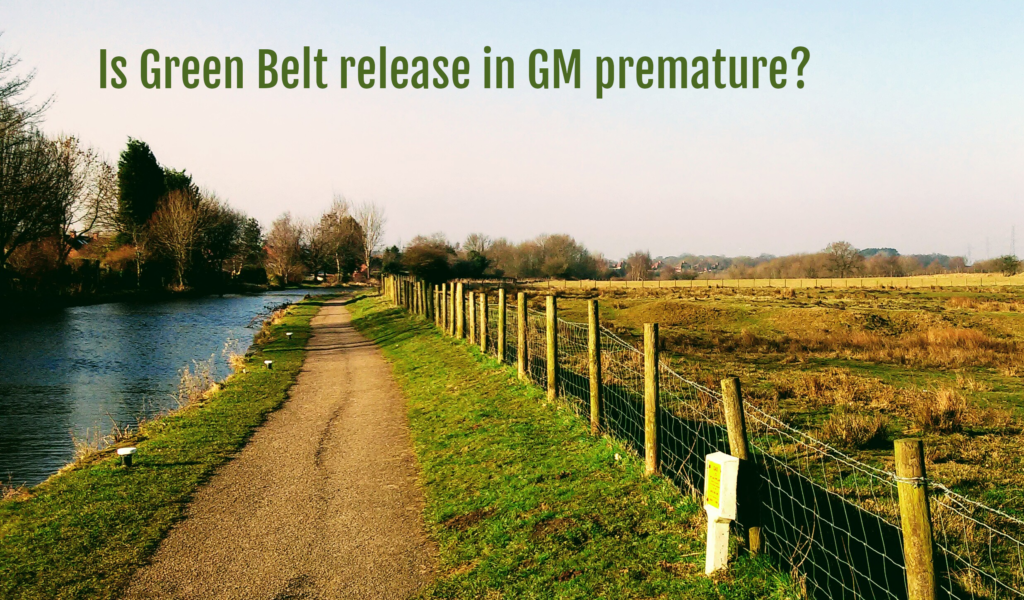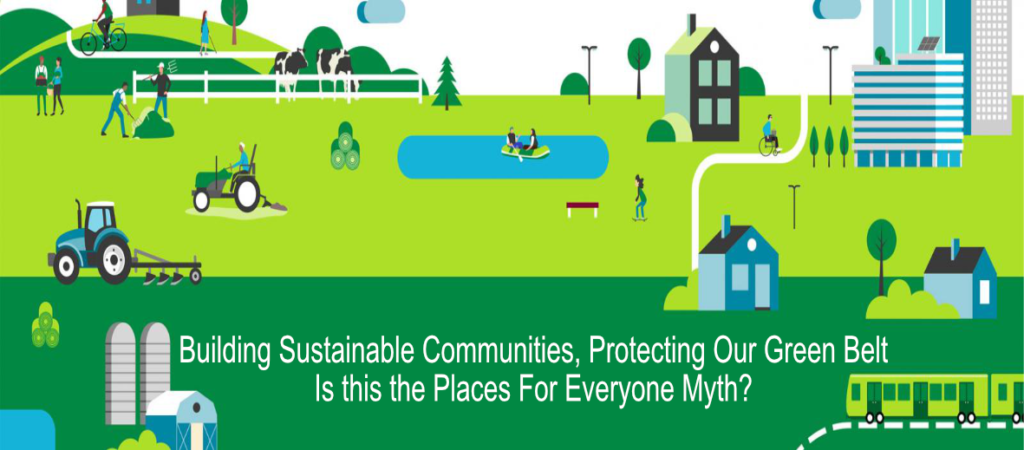Letter to Sir Keir Starmer January 2023
Save Greater Manchester’s Green Belt Group and Steady State Manchester have written to the leader of the Opposition (Sir Keir Starmer) on behalf of a number of GM community groups to provide evidence about the lack of justification for the release of Green Belt. We have also requested his support to encourage the GM Mayor and Council leaders to remove the Green Belt allocations from the Places for Everyone (P4E) Plan. Our alternative solution proposes that previously developed land (brownfield) is progressed as a priority and Green Belt is retained until need is explicitly substantiated. At each 5-year review point for P4E, all newly available data can be examined and the release of Green Belt can be reconsidered following genuine consultation with affected local residents (which has NOT happened to date).
The letter to Sir keir (below) has been circulated to the followg MPs:
Angela Rayner (Shadow Minister and Deputy Leader of the Labour Party)
Lisa Nandy (Shadow Secretary of State for Levelling Up, Housing, Communities & Local Government)
Ed Miliband (Shadow Secretary of State of Climate Change and Net Zero)
Jim McMahon (Shadow Secretary of State for Environment, Food and Rural Affairs)
Louise Haigh (Shadow Secretary of State for Transport)
Andy Burnham (Mayor of Greater Manchester)
Plus all other Labour MPs for Greater Manchester constituencies:
graham.stringer.mp@parliament.uk; yasmin.qureshi.mp@parliament.uk; yvonne.fovargue.mp@parliament.uk; contact@lucypowell.org.uk; afzal.khan.mp@parliament.uk; jeff.smith.mp@parliament.uk; Debbie.Abrahams.mp@parliament.uk; tony.lloyd.mp@parliament.uk; rebecca.longbailey.mp@parliament.uk; jonathan.reynolds.mp@parliament.uk; navendu.mishra.mp@parliament.uk; andrew.western.mp@parliament.uk; keeleyb@parliament.uk; mike.kane.mp@parliament.uk
Dear Sir Keir Starmer
Communities worried about Labour support for Green Belt development
We apologise for this detailed email but we have been asked by our members to highlight our concerns to you as we believe that the Greater Manchester (GM) Places for Everyone (P4E) Spatial Plan is not consistent with your vision or values, particularly your aim for a stronger, fairer, green future.
We recognise that the stated aims, objectives and overarching policies in P4E may appear to be consistent with your vision, but the proposed extensive, unsustainable, developments in the countryside are not. As a result, the Plan is not strong, fair or green. Requirements for market priced housing and warehousing are significantly inflated, there is insufficient provision of desperately needed genuinely affordable homes, rural communities and the rural economy have been totally ignored, and insufficient weight has been given to the impact on climate change mitigation opportunities and nature’s recovery.
Furthermore, the Plan still does not address the scale of opposition to Green Belt loss, despite over 27,000 GM constituents objecting to Green Belt release in previous consultations.
Loss of valuable green spaces
Official data tells us that since 2013/14 England has lost over 25,110 hectares of Green Belt (nearly 100 square miles), equivalent to over 35,000 football pitches of highly valued land, with various natural capital and ecosystem services attributes and community health and wellbeing benefits, that are now forever lost to future generations.
The members of Save Greater Manchester’s Green Belt (SGMGB) group (around 40 community groups in the Greater Manchester area), Steady State Manchester and other communities remain highly disturbed by the GM Mayor and Councils’ plan to prematurely and unnecessarily release 2,430 hectares of Green Belt (comparable to over 3,400 football pitches and almost 10% of the total loss since 2013).
Whilst we understand GM’s aspirations, these should be sustainable, and balanced by a clear appreciation of the impact on communities and the environment. Yet, P4E has no assessment of the impact on rural communities and nothing on Natural Capital to ensure the ‘value’ of the existing ecosystem services is fully recognised. In fact, as we mention below, there is not even an assessment of the carbon implications of the Plan.
Need for residential and employment land over-stated
The publication of the 2021 Census data confirms that our concerns about GM’s proposed level of growth are justified. It is not a lack of market housing supply that is causing the current crisis (emphasis should be on the lack of genuinely affordable homes, mentioned below). In fact, more houses are being built than households formed. This is true for all Regions, as highlighted by Positive Money, a not-for-profit research and campaigning organisation based in London, which reveals that “in 2021 there were 1.4 million more dwellings than households in England”.
Local SGMGB analysis utilised Census and ONS data to highlight that the number of new homes built in GM between 2011 and 2021 far exceeds the number of households formed during that period, with almost 28,000 completed dwellings not contributing to household formation. This figure would grow substantially if the number of empty homes brought back into use during the period (14,000) was included.
That SGMGB analysis also revealed that 50,000 fewer households formed (in the period to 2021) than the number generated using the Government’s 2014-based formula (suggesting that this method of calculating housing need significantly over-estimates requirements). P4E confirms that GM has sufficient existing housing land supply, without releasing Green Belt, to exceed the Government’s overstated calculation, and that existing land supply is sufficient to meet the needs of an additional population of circa 400,000 people, the equivalent of two new boroughs in GM.
Employment land provision is also vastly over-stated (Green Belt release results in a totally unjustifiable 75% buffer) and is focused on warehousing (which is neither highly paid, nor does it support high staffing numbers). GM’s own expert advisor highlighted that the employment land uplift (of 31% prior to the release of Green Belt) represented “the upper-end of margins”. The consultant also observed that “a supply margin of 50% falls well outside the bounds of what has been generally used elsewhere”.
Sufficient brownfield land to meet needs
P4E will see Green Belt released immediately following Plan approval, despite available brownfield sites. This means that Green Belt will be decimated whilst brownfield remains wasteland and the amount of available previously developed land increases! The recent State of Brownfield report from CPRE confirms that this is not unexpected. The report sets out the national number of sites (23,002), the number of hectares (27,342) and the potential number of housing units (1,232,592). All have increased from previous years’ figures. In addition, the report singles out the North West and Manchester as places with high brownfield capacity.
GM does have alternatives to building on Green Belt, but, for example, the potential to convert the 1.3million m2 of excess office floorspace, much of which is in sustainable locations, appears to have been ignored. In fact, despite historical trends, there has been no consideration of potential large/medium windfall sites within the Greater Manchester Combined Authority’s (GMCA’s) figures, although they do confirm (P4E paragraph 8.2.4) that “there is clear evidence to demonstrate that such sites have come forward in the past and no reason to believe that this will not continue to be the case”.
This is a huge, missed opportunity. We are keen to see “levelling up” across GM, but, in P4E, the focus and the funding is on bringing forward sites in the Green Belt, rather than on tackling the blight of brownfield and proposing truly sustainable development.
Insufficient supply of affordable housing
Despite being labelled ‘Places for Everyone’, we do not believe that this is a Plan to deliver housing for the increasing numbers of GM citizens who need a genuinely affordable home. Instead, it will increase speculative development and unaffordable housing, inflating the (already huge) profits of the volume housebuilders. It is clear from our recent analysis that significant numbers are being built as investor assets, Airbnbs, etc, rather than to support those with a dire need for a home!
Last year, Lisa Nandy announced that Labour “will be the first government in a generation to restore social housing to the second-largest form of tenure”.
Shelter report that, across the country, “waiting lists currently sit at 1.2 million”, that “over 120,000 children are living in temporary accommodation” and that these figures are set to worsen because “the cost of living crisis is impacting households”. GM has c72,000 households on local authority registers, and the Plan estimates that “around 38% of newly forming households are unable to afford to buy or rent a home at lower quartile prices”.
Yet during the P4E Examination, the Affordable Housing Policy has been weakened considerably, with the aim to deliver the 9 Authorities’ share “of at least 50,000 additional affordable homes across Greater Manchester up to 2037, with at least 60% being for social rent or rent” being relegated to the reasoned justification paragraphs (meaning it is no longer a policy requirement, more an aspiration).
Development is proposed in unsustainable locations
Both housing and employment developments are sited in unsustainable locations. Over 20 of the 34 Green Belt sites do not have any previously developed land within the site boundary nor are they well served by public transport (key criteria for site selection). A number of the sites propose development on irreplaceable habitats (peat moss), best and most versatile agricultural land, locations that have significant levels of regular surface water flooding, and many will have a huge impact on the local rural economy.
Labour’s vision includes an “efficient, integrated and affordable transport system that reduces carbon emissions and drives economic growth across our country”. Yet, GM’s plans do not prioritise sustainable freight transport, despite the disproportionate focus on warehousing development and the aim of GM’s Transport Strategy to ensure there will be “zero net growth in motor vehicle traffic in Greater Manchester between 2017 and 2040”
There is also insufficient focus on health services (which are already overstretched across the sub-region) – there is no land proposed for a new hospital to serve those 400,000 additional residents, for example. Notwithstanding the new communities, school places are already a strategic red risk in some Authorities and bring many challenges to existing residents, with parents being forced to drive their children to schools outside of their locality. This is not a sustainable Plan.
Huge impacts on climate and environment
Climate and environmental impacts do not carry the same weight in P4E as the proposed excessive growth (despite the GM Strategy focusing on being greener and fairer, as well as more prosperous). That GM Strategy states that “Climate change is the single biggest threat that we face”, yet leaders are supporting a Plan that will increase carbon emissions, increase air, noise and light pollution, and increase the potential for localised flooding?
This P4E Plan will
- remove swathes of best and most versatile agricultural land (which should be retained for future generations and used for sustainable food production)
- impact GM’s ability to address the climate emergency (with many chosen sites subject to regular and extensive surface water flooding)
- lead to unjustified and irreversible harm to the environment, impacting nature’s recovery, with irreplaceable habitats (peat mosses) and sites of biological importance scheduled to be destroyed
- eradicate populations of red listed birds and endangered/protected species, which is certainly not consistent with Labour’s aim to “Reverse the decline of nature”
- significantly impact the physical and mental health and wellbeing of GM residents.
You mentioned in a recent tweet (19th January 2023) that Labour “will decarbonise the economy, create good jobs, boost energy security and make the UK a world leader in the climate transition”. That is great news, and we are delighted that Labour is seeking to seize the opportunities of a low carbon economy, to “radically cut emissions” and to “manage a fair and prosperous transition to net zero”, but the GM Plan will NOT support those goals.
The excessive growth set out in P4E will cause significant additional carbon emissions that will make it difficult for GM to stay within its stated carbon budget and meet its carbon target, including its aspiration for carbon neutrality by 2038.
During the P4E Examination, and at a time when decarbonisation should be top of the agenda, the GMCA backtracked on a number of policies (net zero buildings will now be something to be worked towards, rather than mandated, and will be subject to financial viability, the ‘get out of jail card’ used by developers to avoid planning policy obligations). In addition, the weakening of the brownfield first policy (viability again) could result in greater Green Belt release, with the associated increase in carbon emissions.
The GMCA did not produce any quantitative assessment of the implications of their proposals, and suggested, at the P4E Examination, that it was reasonable for them not to provide such data. Communities highlighted the approach taken in the Greater Cambridge Plan, an Authority which did conduct quantitative modelling of the carbon impact of their different spatial options. This Authority was dismissed as an outlier, rather than heralded as setting a standard that other plans should be following.
In the absence of any assessment by the GMCA, Steady State Manchester has analysed the data and has produced a report which sets out the Carbon Implications of Places for Everyone, showing that the 2038 carbon neutrality objective is unlikely to be met.
Communities are an important, unpaid asset, providing time and talent to help protect the climate and the environment. The proposed changes set out in the NPPF consultation, recognising communities as key stakeholders in the planning process, are very welcome. Our responses will stress the need for a more transparently sustainable approach, one which gives equal weight to the environmental and social objectives as that given to economic benefits.
Our proposed solution
Our proposed solution would be to retain land in Green Belt until need is explicitly substantiated.
At the 5-year review point for P4E, all newly available data can be examined. The release of Green Belt can then be reconsidered following genuine consultation with affected local residents (which has NOT happened to date).
Our plea to you
We hope you will agree that the evidence we have set out above demonstrates that there is currently no justification to release land from Green Belt to satisfy either housing or employment need in GM.
We urge you to request that the GM Mayor and Council leaders ask the Planning Inspectors, who are currently conducting the P4E Examination, to remove the Green Belt allocations from the Plan, for consideration in a future review, as suggested above.
We look forward to your early reply and would be happy to host a call to discuss the issues we raise, if required.
Kind regards
Zoe Sherlock
Chair
Save Greater Manchester’s Green Belt Group
Mark Burton
Steady State Manchester



